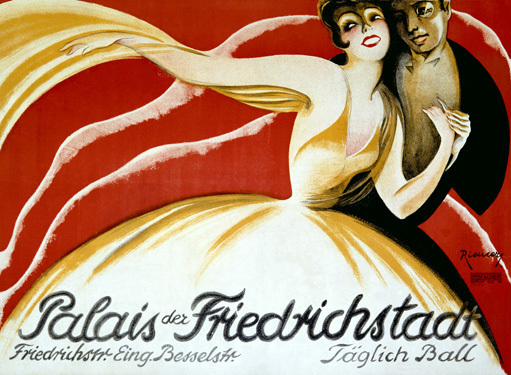
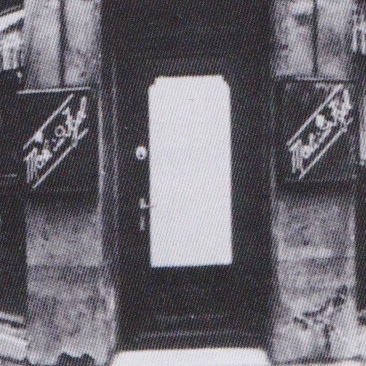
Berlins Lesbische Frauen
In 1928, Ruth Margarete Roellig wrote a guide book for visitors to Berlin. But this wasn’t just any run-of-the-mill guidebook. This was Berlins Lesbische Frauen a comprehensive guide to the hottest and most happening lesbian bars and clubs the city had to offer.

With an estimated 85,000 living in the city, Berlin was the lesbian capital of the world, and visitors were flocking in to experience all the city had to offer, and there was plenty! Lesbian life in Berlin at the time boasted two weekly newspapers, twelve social clubs, two ice-skating leagues, a nudist retreat, three outdoor sports associations, six magazines and as many as fifty bars and clubs.
In the cabaret theatres of the Kurfürstendamm, Marlene Dietrich and Margo Lion were thrilling the crowds with their flirtatious duet Wenn Die Beste Freundin just a few years after Mischa Spolianky’s smash hit Das Lila Lied – both songs were to become the gay and lesbian ‘anthems’ of the city.
Roellig’s guidebook focussed on twelve of the most well known venues, surprisingly, nearly all of them in the Schöneberg district of the city; a district now assumed be almost the exclusive preserve of the gay male scene. But in the late 1920s the two scenes co-existed, and often merged, with apparent ease.
A great example of this was the newly-opened Dorian Gray, at Bulowstrasse 57. The nights of the week here were very fairly divided up between the boys and the girls – Tuesdays, Saturdays and Sundays were men only; Mondays, Thursdays and Fridays were women only. Wednesdays were host to a very specialist S&M night, and the only night that straight men were admitted!

It was a different story across the road at Bulowstrasse 37 , which was the home of The Violetta, owned by Lotte Hahm, a successful and well liked women-only club with over 400 members.
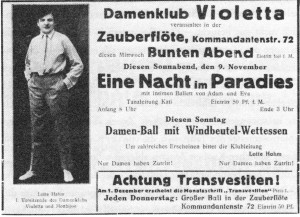
Further up Bulowstrasse and a turn to the left brought you to Schwerinstrasse and The Topkellar. Described at the time as “dangerous, fun, sexy and bohemian”, The Topkellar was tucked away in the second Hof, through three gates and up a narrow staircase. Flamboyant owner Gypsy-Lotte actively encouraged straight men into the venue to keep the bar takings up and to maintain the club’s reputation for wild nights and excess. Tourists were also encouraged to visit and English travel company Cooks would send a bus around the top hotels at midnight collecting thrill-seeking visitors for their “only in Berlin” experience of The Topkellar. Monday nights, however, were women-only.
Sitting cheek by jowl back on Bulowstrasse were Cafe O La La and The Hohenzollern Cafe. The former dressed it’s bar staff up as French maids but the windows were so dirty you couldn’t see in and the latter was a homely affair for long-established couples .
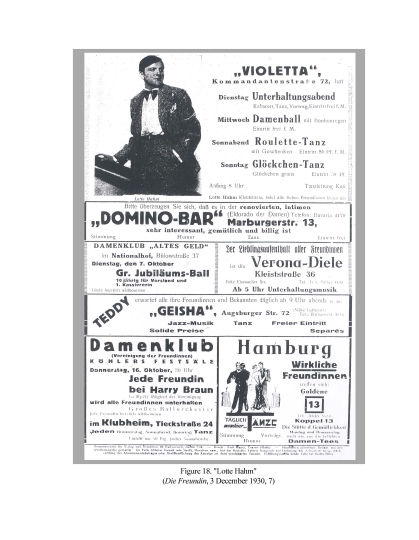
Past Nollendorfplatz U-bahn, on Kleistrasse was The Verona Lounge, a pleasant and chic place in the afternoons and evenings but also an outrageous and tense after-hours hangout for expensive lesbian prostitutes. Equally chic, but definitely more late-night was Le Garconne on Kalkreuthstrasse, owned by Susi Wanowski, the former wife of a Berlin Chief of Police but now the lover and manager of Wiemar-era wild-child, Anita Berber.
A permanent sign on the door at Mali and Ingel’s at Lutherstrasse 16 read “Closed for Private Party” and inside was an exclusive reservations list. Limited to no more than 60 guests at any one time, this was the preferred hangout for women artists, intellectuals, singers and stage actresses.
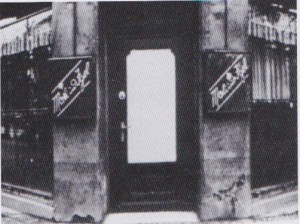
Twice yearly, Mali and Ingel joined forces with the 600 member Club Monbijou Of The West for an extravagant women-only ball at the nearby Scala, tickets were highly sought after and the event always sold out.
Tragically, none of these venues survived past the political turmoil of the early 1930′s and all were closed when the Nazis came to power in 1933. The new-found financial and personal freedoms that had been enjoyed by women during the late 1920′s were rapidly eroded and it’s safe to say that the Berlin lesbian scene was never the same again.
Ruth Margarete Roellig’s book was reworked and reprinted in 1994 by Adele Mayer and is now called Lila Nächte, Die Damenklubs Im Berlin der Zwanziger Jahre and published by Edition Lit.europe
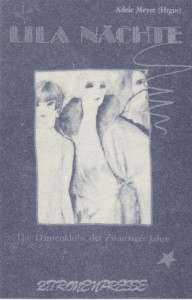
This article was originally written for and published by www.slowtravelberlin.com.
